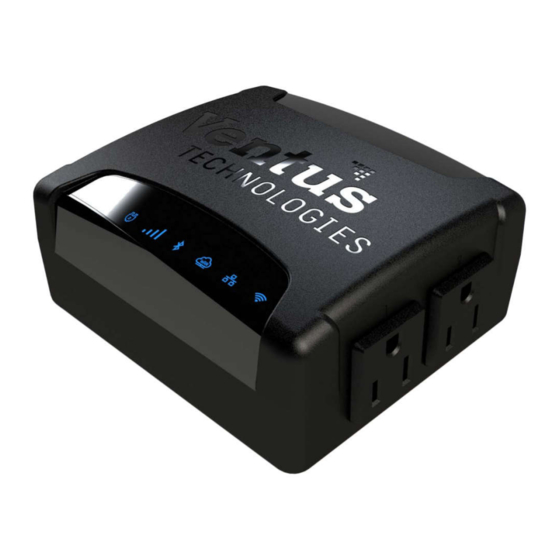
Advertisement
VRB842 User Manual
Notes: This device is for the Managed Cellular Service use only, and must be
installed by the trained technicians. It is not for resale or used as consumer
electronics.
Applications: Wireless router connecting the devices on LAN and WLAN to Internet
through cellular network.
The VRB841 provides:
The VRB842
1. One WAN port for wired connection to the cable modem or DSL modem;
2. One LAN port for local network switch or devices;
3. 12VDC 2.1/5mm power jack for power supply
4. One Dual-MCX connect for antennas
5. One IEC AC power entry socket
6. Two US AC power outlets
Advertisement
Table of Contents

Summary of Contents for Ventus VRB842
- Page 1 VRB842 User Manual Notes: This device is for the Managed Cellular Service use only, and must be installed by the trained technicians. It is not for resale or used as consumer electronics. Applications: Wireless router connecting the devices on LAN and WLAN to Internet through cellular network.
- Page 3 Installation: 1. Connect the WAN port to the local router is needed; 2. Connect the LAN to the devices need the connectivity to the Internet through the Cell LTE wireless network, or through the wired WAN connection. 3. Connect the antenna to the Dual-MCX socket 4.
- Page 4 This equipment complies with FCC radiation exposure limits set forth for an uncontrolled environment. End user must follow the specific operating instructions for satisfying RF exposure compliance. This transmitter must not be co-located or operating in conjunction with any other antenna or transmitter. FCC Warning: FCC Compliance Statement You are cautioned that changes or modifications not expressly approved by the part responsible for compliance could void the user’s...
- Page 5 Safety Warning Protecting Against Electrostatic Discharge CAUTION: Disconnect product from mains power source in accordance with product specific safety information located on the “Safety Information” section of this website. Electrostatic discharge (ESD) events can harm electronic components inside your computer. Under certain conditions, ESD may build up on your body or an object, such as a peripheral, and then discharge into another object, such as your computer.
Need help?
Do you have a question about the VRB842 and is the answer not in the manual?
Questions and answers